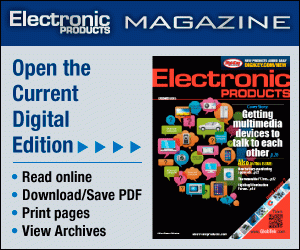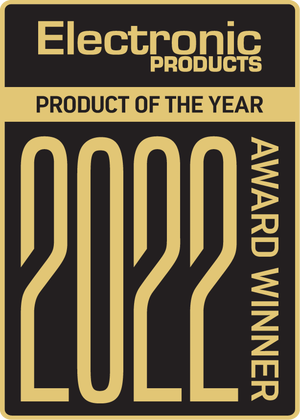Embedded storage in disposable medical items
Usage data availability ensures staying within a product’s design life and hygiene requirements
BY JONATHAN DILLON
Microchip Technology
www.microchip.com
Many medical products have attachments that are designed to be discarded after a procedure, rather than being sterilized and reused. These single-use accessories are supplied in sterile, sealed packaging, and are opened before the procedure. Being disposable, they can be lower cost, lighter weight, and more flexible, since they do not have to withstand the sterilization process or be robust enough for long-term use. Manufacturers and users of these products have concerns over third parties refurbishing and re-sterilizing the unit for re-use, exceeding the unit’s design life and possibly compromising hygiene. Other concerns include an incorrect accessory being used or the accidental use of an expired unit.
If the system already uses digital control or measurement, then it can be relatively simple to add an electronic communications link to the disposable portion. The simple configuration depicted in Fig. 1 allows the system to identify the accessory, retrieve additional data and record usage data in an integrated memory device embedded within the disposable accessory.

Fig. 1: Embedding memory within a disposable medical accessory enables communication with the main system for the retrieval of usage and other data.
The following categories are representative of the types of data that a medical device manufacturer may want to retrieve from a disposable accessory:
Usage information
For disposable accessories, it is possible to record that the unit has already been used and the serial number of the equipment involved. While this data can also be recorded by the equipment, it is necessary to record this information in the accessory itself to guard against improper reuse with another system. It is also useful to count down the total duration of use or numbers of usages, for accessories with specific lifespans.
Calibration information
Ideally, all accessories produced would be identical. However, the effect of manufacturing tolerances, processes, and chemistries may cause significant variation between units or batches. The system will only be able to compensate for these variations if it is aware of them. Accessories can be tested at manufacturing and their compensation values can be stored in the memory. Storing this data in the accessory makes the compensation seamless to operators, and ensures that the accessory and its calibration data are not separated or mixed up.
Expiration date
It is relatively straightforward to program the medical accessory with an expiration date. This requires that the system console has the current date and time, to compare against the accessory’s expiration date and verify whether it has exceeded its shelf life.
Model number
The accessory’s model number can be used to ensure it is the correct accessory for the system, and to indicate the accessory type for systems that accommodate multiple disposable-attachment categories.
Serial number
Health-care management may want our system to record the serial numbers of every attachment used, for the collection of warranty information and the statistical analysis of failures. If the manufacturer has a method for communicating with equipment in the field, then recall management can be as simple as instructing the equipment to reject specific accessory serial numbers.
Implementation options
If the system already uses a microcontroller (MCU), only an interface to the accessory needs to be added. If electrical contact can be made between the accessory and the system, then a serial protocol is well suited for the limited volumes of data that need to be transferred, and fulfills the low-cost and small-physical-size requirements of disposable medical accessories. If the system has an internal serial bus, then it may be simple to extend that bus to the accessory.
Since the electronics in the accessory need only communicate and store data, a serial memory device can be used to minimize complexity and components. Serial memories are available with a variety of communication busses; the most common choices and their trade-offs are listed in Table 1 .

Table 1: A comparison of the most commonly used serial-memory communication busses.
SPI allows for rapid communications, but the four data lines and two power lines require larger and more expensive connectors. The I2C protocol and single-wire busses, such as Microchip’s UNI/O protocol, are better suited to these applications. The limited volumes of data required by disposable medical accessory applications means that the lower communication speed is not an issue. The reduced number of electrical lines required by these protocols allows smaller, lower-cost connectors and potentially more reliable communications. The two-wire I2C communication protocol is synchronous, so it doesn’t have tight timing requirements and is simple to implement.
I2C is widely supported by many microprocessors and microcontrollers possessing hardware interfaces. Meanwhile, single-line communications protocols often require software to manage the bus though this software is widely available or the use of a translation bridge device. Unlike I2 C, there are several competing, proprietary single-line protocols.
The leading single-wire protocols support self clocking or clock recovery, which removes the requirement of high-precision oscillators on both ends. Keeping the data rates low allows the use of long cables along with the use of simple signal noise filtering. With many single-wire communications protocols, power can be supplied over the data line, but some external components may be required.
Choosing the memory device
Low-cost serial EEPROM devices are available with either I2 C or single-wire interfaces from a number of suppliers. Additionally, they are available in a wide range of storage capacities, from 128 to over one million bits, enabling the memory to be matched to the specific needs of the application. The very small device packages, such as the SOT-23, SC-70, and bumped-die chip-scale package types, allow for easy integration into the disposable accessory without significantly altering its size and shape. EEPROM technology also offers highly robust storage for more than 200 years at high temperatures.
When in use, the system can re-write the data stored in the accessory, allowing the usage information to be updated and the system to indicate that the device has now been used and should be discarded. Or, the accessory’s data can be rewritten to record its usage history, as shown in Fig. 2 . Writes to the EEPROM are performed quickly. However, since the accessory can be disconnected at any time, it is a good practice to read from the memory afterward to verify that the write occurred and was completed. EEPROM offers high 1,000,000 cycle endurance.

Fig. 2: Typical data communications with a disposable medical accessory’s onboard memory.
For additional security, Serial Presence Detect (SPD) EEPROMs support software write protection, where a command is required in order to lock and unlock a portion of the memory for writing. This scheme can protect against erroneous writes by the system. A further subset of EEPROM devices has permanent write-protection schemes which, once enabled, cannot be unlocked.
This permanent write protection can be used to indicate that an accessory has already been used. The system can still read the usage information, but the protection scheme prevents the information from being reset by third-party refurbishers. SPD devices are I2 C based, and produced by all of the leading EEPROM manufacturers.
These devices are also standardized, avoiding single-sourcing issues. There are SPI EEPROM devices with additional options for write protecting certain portions of memory. These devices are best suited to sophisticated systems that can tolerate the large number of wires and connections.
Serial EEPROM memory devices are easily programmed during the manufacture of disposable medical accessories, using standard equipment operating at high speeds. This includes the programming of model numbers/types, serial numbers, batch calibration, expiration dates or the maximum number of allowed uses. ■
Advertisement
Learn more about Microchip Technology





